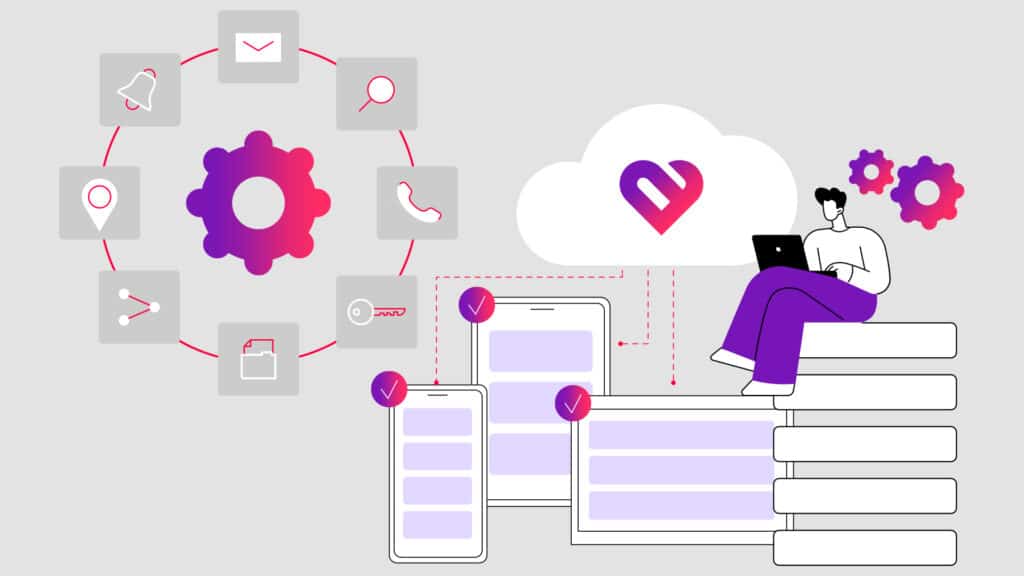
The Artera iO blog is taking a little detour today, into the world of Go-to-Market (GTM)!
I’m June Hung, from our Product Marketing team here at Artera. In this blog post, I’m shifting the focus from “Building” to its equally vital counterpart: “Selling”.
You’ll soon discover the many intricate elements that make up the art of sales.
Hopefully, by the end of this blog, you will gain more insights into these two questions:
(1) What happens once a product is launched?
(2) What is considered a ‘successful’ launch?
Before we get into the Launch, let’s first introduce the main stakeholders of Artera’s GTM team and their scope of responsibilities.
- Product: A Product Manager (PM) is like the cartographer on a voyage, while the GTM teams are the sailors, merchants, and navigators, bringing goods to the world. PMs chart the landscape—what the product is, who it’s for, and why it matters. The product vision is written by PMs, but it only becomes real when the GTM teams bring it to the world — both are indispensable to creating a successful launch.
- Product Marketing: A Product Marketing Manager sits at the intersection of Product and Sales, translating complex technical features into clear, compelling value propositions. We develop the pricing & packaging strategy for Product, while creating impactful sales assets, competitive intelligence toolkits, and enablement tools to support our sellers.
- Sales: Sales Development Reps (SDRs) identify and qualify potential customers to see if they’re a good fit for our solution, then warmly hand off interested leads to Account Executives (AEs), who focus on closing the deals (discovery, negotiation, and contract finalization).
- Solution Engineers: SEs are the technical sales experts. They have deep knowledge of product functionality and can show how the product works in practice, tailoring demos and solutions to customer needs.
- Customer Experience: Customer success managers (CSMs) focus on supporting customers in achieving their goals; they work closely with Customer Education to provide ample knowledge and training resources to make sure customers extract product value.
- Marketing and Communications: MarComms focuses on telling the story at scale. At Artera, we execute an integrated marketing campaign, leveraging multiple channels — from SEO-optimized website and social media outreach to Healthtech conferences and press releases — working cohesively to build awareness, generate leads, and shape market perception.
- Professional Services (PSO): PSO is the ultimate last push to bring the launch to fruition – they are the ones to implement the product at customer sites, work with integration partners, and handle customer support experiences.
So, how do GTM teams all come together?
Here are my top three recommendations for driving alignment across GTM operations.
ONE – Partnership Starts Early: Months prior to a product’s “general availability” (GA), GTM leaders are already syncing on a weekly basis. During these group huddle sessions, we exchange resources, brainstorm on communication strategy, and identify roadblocks. Over the 7+ product launches I’ve been a part of, here are some examples of the ways our teams collaborate:
- CSMs support beta recruitment during product discovery phase and funnel customer feedback to product for iteration
- PMM and Customer Education develop customer-facing and internal sales enablement materials
- Product provides technical knowledge to SEs, who then develop demo scripts
- CS and PSO coordinate on the customer implementation guide and product roll-out timeline
- Product leads stakeholder meetings to share product updates, upcoming GA milestones, and future vision; CS and Sales ask follow-up questions and share market feedback
- MarComms & PMMs partner to define product messaging pillars and align on marketing strategy
- Success Factor: Early and frequent communication drives efficiency. In a highly agile startup environment, delayed communication or information leakage can significantly impact the launch speed, messaging accuracy, and ultimately, customer experience. The earlier we tackle challenges as a team, the better prepared we are to face the unknown.
TWO – Hyper Focus on Enablement: Enablement is the engine oil — invisible when working well, but without it, the entire GTM machine seizes up. An efficient GTM team does not rely solely on SEs to lead product-focused discussions. Sellers who have sophisticated technical knowledge can more quickly establish credibility and cultivate trust in customer relationships.
- Case Study: At the beginning of this year, Artera leadership kicked off an AI Agents training bootcamp to ensure GTM key members are well-versed in our agents’ tech stack and terminology, and are equipped to conduct an AI Agent demo, navigating discovery conversations with customers. Over a two-month period, Product, PMM, and Sales came together to develop enablement materials (from market landscape, tech stack walk-through, to a glossary, and other assets). Within two months, we trained and certified 60+ employees, so they can confidently represent our AI Agents products and lead AI-oriented discussions with clear guidance and follow-ups.
- Success Factor: When sales and CS become experts in the product, they no longer need to bring in PMs or SEs to address FAQs; in return, PMs can spend less time in meetings and more time building. As we enable the organization with product knowledge, we identify customer needs accurately and help customers extract our product value faster.
THREE – Keep Track of Success Metrics & Feedback: In many organizations, employees reference ‘feedback loops’ and ‘KPIs’ to link their work to results; however, accountability can remain a challenge. At Artera, we are constantly looking for ways to foster more checks and balances in the launch planning process.
- Case Study: We recently kicked off a ‘Release Review’ process. For every product GA, leadership establishes an overarching goal, and each GTM leader provides team-specific success criteria that ladder up to that goal. We then share these metrics at iO-all-hands for organization-wide visibility and accountability. On a recurring basis, GTM leaders check in on progress, identify potential roadblocks, ideate solutions, and make data-driven decisions.
- Success Factors: Release Review provides an anchor point for difficult discussions – if a product is not performing as expected, GTM teams brainstorm creative solutions to overcome the challenge. If a product meets the overarching goals, we bring learnings into the next launch. If a product sees limited market growth, leadership leverages established KPIs to inform future roadmap priorities and reallocate resources.
The Takeaway
Launching a product isn’t a simple baton pass—it’s a coordinated climb where Product, Product Marketing, Customer Success, Sales, Marketing, and PSO move together.
Here is a snapshot of how our teams integrate with one another:
- Product defines what’s possible.
- Product Marketing ensures that what’s possible is packaged, priced, positioned, and understood.
- Sales converts market opportunities into revenue.
- PSO brings product into existence.
- Customer Success drives real-world impact for users.
- Marketing scales the story to the world.
Artera’s GTM team is a highly experienced, well-oiled machine with over a decade of experience. While we continuously learn and evolve, our unwavering commitment remains the same: delivering the best possible product to our customers.
Artera, a SaaS leader in digital health, transforms patient experience with AI-powered virtual agents (voice and text) for every step of the patient journey. Trusted by 1,000+ provider organizations — including specialty groups, FQHCs, large IDNs and federal agencies — engaging 100 million patients annually. Artera’s virtual agents support front desk staff to improve patient access including self-scheduling, intake, forms, billing and more. Whether augmenting a team or unleashing a fully autonomous digital workforce, Artera offers multiple virtual agent options to meet healthcare organizations where they are in their AI journey. Artera helps support 2B communications in 109 languages across voice, text and web. A decade of healthcare expertise, powered by AI.
Our award-winning culture: Since founding in 2015, Artera has consistently been recognized for its innovative technology, business growth, and named a top place to work. Examples of these accolades include: Inc. 5000 Fastest Growing Private Companies (2020, 2021, 2022, 2023, 2024, 2025); Deloitte Technology Fast 500 (2021, 2022, 2023, 2024); Built In Best Companies to Work For (2021, 2022, 2023, 2024, 2025). Artera has also been recognized by Forbes as one of “America’s Best Startup Employers,” Newsweek as one of the “World’s Best Digital Health Companies,” and named one of the top “44 Startups to Bet your Career on in 2024” by Business Insider.
For more information, visit www.artera.io.
Disclaimer: Artera’s blog posts and press releases are for informational purposes only and are not legal advice. Artera assumes no responsibility for the accuracy, completeness, or timeliness of blogs and non-legally required press releases. Claims for damages arising from decisions based on this release are expressly disclaimed, to the extent permitted by law.




